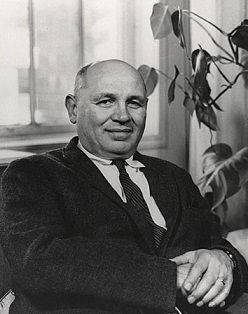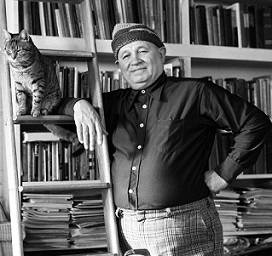Early Training
In the 1920s, the Bearden family relocated from Manhattan to Pittsburgh. Upon graduating high school, Bearden was not that interested in art and instead played semiprofessional baseball in the Negro Leagues for a short time in Boston. It was as a college student that Bearden developed an interest in art, in particular cartooning, while studying at the prominent Lincoln University, the country's first Historically Black College and University (HBUC, established in 1854), located in Pennsylvania. Originally, he aspired to be a cartoonist. The young artist transferred to Boston University where he served as the director of the college humor magazine. Later, while at New York University, Bearden became more committed to his artistic studies and worked as the lead cartoonist and art editor for the school's student magazine; he graduated in 1935. Bearden went on to study mathematics at New York's Columbia University. Primarily a self-taught artist, Bearden briefly studied between 1936 and 1937 at the Arts Students League where his education included an intensive study of the Old Masters. Bearden was particularly interested in Cubism, Futurism, Post-Impressionism, and Surrealism. While studying at the Arts Students League he exhibited early figurative paintings at the Harlem YMCA and the Harlem Art Workshop.
Concurrently, while a college student, Bearden earned his livelihood as a political cartoonist for several African-American publications including W.E.B. DuBois's The Crisis. Bearden was a co-founder of the Harlem Artists Guild in the 1930's, which was a key social and advocacy group for black artists and was also active with the artists' collective Group 306. Because his family was relatively financially sound, unlike most of his contemporaries, Bearden did not qualify for the WPA federal art patronage programs, and so he continued to work on his art while juggling several jobs. His studies were interrupted when he was drafted into in the US Armed Services, where he served as an army sergeant from 1942 to 1945 in the 372nd Infantry Regiment, which was a racially segregated unit. Upon his return to America, the artist worked as a case worker for the New York City Department of Social Services. He remained in this position until 1969 when his artwork alone supported him and his wife, Nanette Rohan, a dancer who was the organizer of the New York Chamber Dance Company; the couple did not have any children.
Mature Work and Late Period

Bearden launched his career in 1940 with a solo exhibition of his paintings in Harlem, which was well received. Five years later, the Corcoran Museum of Art in Washington, DC hosted a one-man exhibition that brought great praise to the painter. These early exhibitions were waylaid by his tour of military duty. After the Army, the artist resumed painting with oils and watercolors. He turned his attention to religious subject matter, which, in part, testified to the importance of the black Church in American life. The artist exhibited his series, The Passion of Christ (1945) at the important Samuel M. Kootz Gallery in New York City, which also represented many Abstract Expressionists. Bearden's exhibition was a critical, as well as a financial, success. The Museum of Modern Art purchased He is Arisen (1945) from the Passion of Christ series (1945), which was the first Bearden work to enter the museum's collection, as well as the first ever museum purchase for the artist. In 1947, Bearden was one of only four African-American artists who had a solo exhibition in midtown Manhattan blue-chip galleries. By the following year, Bearden was among the most discussed American modernists and had exhibited several times at the Whitney Museum of American Art.
In the 1950s, alienated from American society due the country's pervasive racism, with funds from the G.I. Bill, Bearden returned to Paris to study art history and philosophy at the Sorbonne for two years. He associated with and befriended such leading modernists as Pablo Picasso. The artist soon became a central figure within Paris's black, expatriate community, and the Negritude movement.
When he originally returned to New York, the artist gave up painting and devoted himself to making music. Bearden was knowledgeable and passionate about jazz and composed several jazz tunes. He co-wrote the hit song "Sea Breeze," which Dizzy Gillespie recorded. It is thought by some that Bearden might have suffered a nervous breakdown at this time. By studying and copying the works of Old Masters, as well as such modern figures as Matisse and Picasso, he worked his way back into painting and health. Still, because he did not keep up with changing styles and trends in the mid-1950's, the Kootz Gallery dropped Bearden from its stable of artists because his work was not sufficiently abstract by contemporary standards. It 1954, Bearden took a studio above the famed Apollo Theater, where he painted abstract canvases heavily influenced by Chinese painting. In the 1950's, Bearden relocated his studio to downtown New York; Harlem still remained vital to his life and to his art.
In 1962, along with Charles Alston and Norman Lewis, Bearden founded the Spiral Group, an African-American artists' collective that explored the ways artists could contribute to the ongoing Freedom Movement, which met at Bearden's Greenwich Village studio. As a group they attended the March on Washington for Jobs and Freedom (1963). Bearden suggested to the Spiral artists that they collaborate on a collective work by making a large-format collage. When the artists rejected this invitation, Bearden began to pursue the idea alone. In 1963, Bearden found his unique voice with his turn to collage and photomontage, which he called his early works, in Projections, a series that encompassed both photojournalism and Pop art. The Projections consisted of scenes of Pittsburgh and Harlem but mostly Charlotte, North Carolina, where he was born. Bearden would continue with collage through the remainder of his career. Bearden often made prints of his collages, which compromised the idea of the original, a key feature of high art and modernism.

The 1970s were a productive and positive period for the artist. With his wife, he spent a great deal of time on the Caribbean island of St. Martin where Nanette's ancestors had lived; in 1973, they build an island retreat there. At this time, Caribbean influences and images asserted themselves in his work, as he intensely studied the customs and spirituality brought over from Africa during the slave trade. Increasingly, Bearden's collages of the 1970's took on musical themes, from the urban blues of Kansas City and Harlem nightclubs, to the blues and church music of Mecklenburg, North Carolina. Bearden also began to design costumes and theatrical sets for his wife's dance troupe and for the renowned Alvin Ailey Dance Theater, bringing together the visual arts, dance, and music in one art form.
Towards the end of his life, Bearden received numerous prestigious awards including election to the American Academy of Arts and Letters in 1966, honorary doctoral degrees, and the President's National Medal of the Arts in 1987. President Jimmy Carter hosted a White House reception for the artist in 1980. Both the National Urban League and the NAACP awarded him great honors. By 1982, Bearden's health had become compromised, yet he kept working up until his death. Bearden succumbed to bone cancer in a New York hospital on March 12, 1988. His ashes were taken to property on St. Martin, as the French West Indies had been the subject of later works.
Legacy
Perhaps Bearden's greatest legacy is as a role model for all artists in trusting one's own vision. When Abstract Expressionism was "the" artistic movement to engage with, Bearden forged his own path and began making collages specific to his experiences as an African American man. This inclination to mine the Southern black experience and that of the urban North still influences artists who find their bearings in art of their own heritage and locale. Finally, Bearden's importance is in revising the art of collage for the American story.
Bearden's fame and artistic influence has grown exponentially since the 1980's. With the greater inclusiveness of African American art within traditional, predominantly white mainstream survey texts and college classes, Bearden is no longer isolated on the margins of art history. This greater exposure is mirrored in museum collecting practices and major exhibitions of which Bearden has had many over the past 2 decades. Additionally, the establishment of the Romare Bearden Foundation has helped not only to grow his name and public awareness, but also, to encourage and foster the growth of untold numbers of artists in the present day.
http://www.theartstory.org/artist-bearden-romare.htm